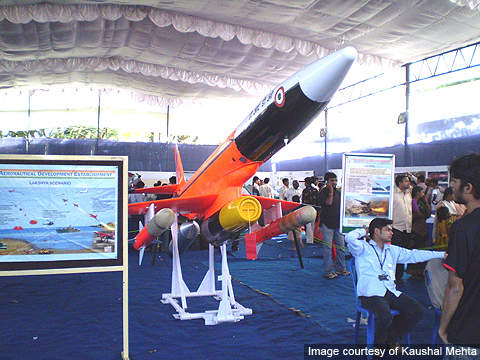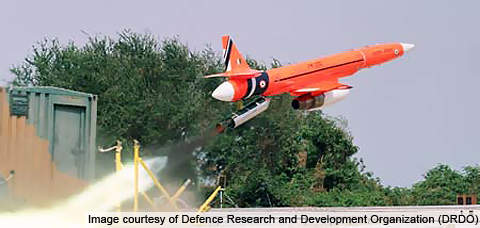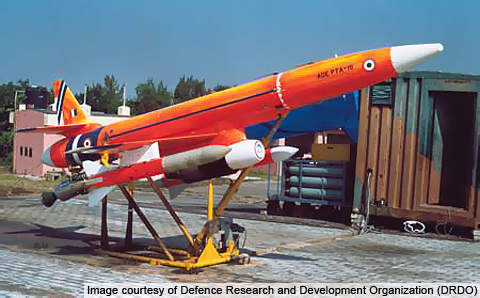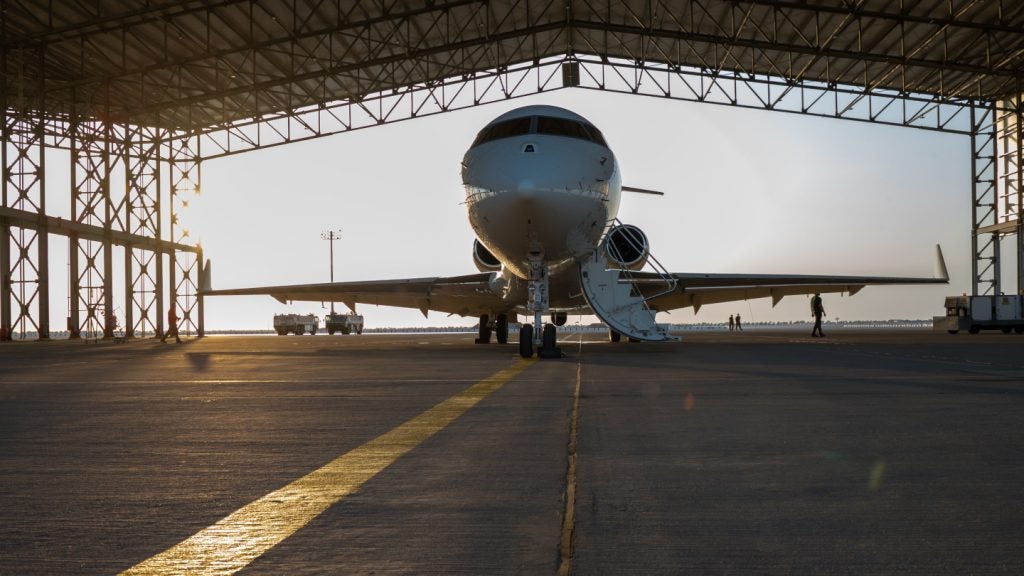Lakshya is a remotely piloted aerial vehicle designed and built by Aeronautical Development Establishment (ADE), a subsidiary of the Defence Research and Development Organization (DRDO), for the Indian Armed Forces.
A total of 23 Lakshya units are currently operational with Indian Defence Services.
A reconnaissance version of Lakshya is being built. It will be fitted with electro-optic cameras, digital onboard computers and Satcom datalink to carry out autonomous operations.
An advanced model called Lakshya-2 is also being developed by ADE. The variant can fly at very low altitudes ranging between 15m and 20m for testing guns and missiles.
It will be available in land recoverable and sea recoverable versions.
Lakshya unmanned aerial vehicle design
Lakshya is a reclaimable aerial target system designed to train gun and missile crews and air defence pilots in engaging targets.
It was designed to launch either from land or sea through a zero length launcher and be recovered by a dual stage parachute system.
Designed to be reused for 15 missions, the aircraft can spiflicate airborne incoming enemy targets.
Development of the Indian UAV
The development of Lakshya pilotless target aircraft (PTA) was proposed in 1976.
ADE conducted the feasibility study of the PTA to meet the demands of the Indian Armed Forces.
The Indian Ministry of Defence devised an inter service qualitative requirement (ISQR) common to all three forces, including the Indian Air Force (IAF), Indian Navy and Indian Army in January 1977.
The Indian government approved $3.8m to ADE in September 1980 to design and manufacture the Lakshya. It also sanctioned $1m to Hindustan Aeronautics Limited (HAL) in September 1980 to build an indigenous turbojet engine (PTAE-7) for the PTA.
The maiden flight of the Lakshya took place in 1985. Four Lakshya prototypes incorporated with microturbo TRI-60-5 engines were rolled out between December 1985 and July 1986 for flight trials. The first two trials were successful but the remaining two failed.
Of 18 PTA prototypes produced by ADE by June 1994, ten were lost in testing phases during 1985-1990. The development of Lakshya was officially completed in June 1994 at a cost of $4.9m.
The first trial of the PTAE-7 engine was successful in January 2001. ADE piloted the modern version of the Lakshya fitted with PTAE-7 engine from ITR, Chandipur, in May 2002.
The development of an advanced reconnaissance version of Lakshya was officially unveiled in July 2003. Flight trials of the version were held in April 2003.
The maiden flight test of Lakshya-2 took place in December 2010.
Orders and deliveries of DRDO’s Lakshya UAV
ADE delivered the first six Lakshya units to IAF in 1998. The PTAs entered service in November 2000 at the interim test range (ITR), Chandipur.
The Lakshya was operational with the IAF and Indian Navy by April 2002. A total of 25 Lakshya UAVs were ordered by the Indian Armed Forces in November 2002.
VK Atre, scientific advisor to the Defence Minister, announced in March 2002 that Israel was willing to purchase Lakshya PTA. The flight trials of the aircraft built for Israel were carried out in November 2002.
Features
The Lakshya features a breakable nose cone, air target imitator, infra-red sensor and synthetic aperture radar.
It is equipped with a target towing unit under wing pylons to train crews of anti-aircraft guns and missiles.
A JATO rocket booster weighing 145kg is installed to enable smooth take-off.
Avionics onboard the Lakshya UAV
The avionics suite installed in the Lakshya includes flight control electronics (FCE), electro-mechanical actuators, vertical gyro, acoustic miss distance indicator (AMDI) and CW doppler. The AMDI measures the miss distance of projectiles and assesses performance and proficiency of the artillery crew.
Engines, thrust and power
The Lakshya is powered by a single PTAE-7 turbojet engine rated at 3.7kN of thrust. The engine is designed and manufactured by HAL in Bangalore. It features a four stage transonic axial flow compressor, single stage turbine, an annular flow combustion chamber, digital electronic fuel control system and 16 fuel flow burners.
The length and diameter of the engine are 1.27m and 0.33m respectively. The dry weight is 65kg.
Ground control station
The Lakshya can be controlled from the ground control station (GCS) through pre-programmed hardware and software systems.
The GCS and telemetry station operates the vehicle and aids in real time data acquisition.
Each GCS can operate five drones simultaneously.
It renders mission planning and simulator facilities to plan, validate and execute the vehicle’s missions.
The commands can be transmitted from the GCS to the vehicle by telecommand system at UHF or L-band frequency.
Performance and speed
The Lakshya can climb at the rate of 25m/s. The maximum speed of the aircraft is 857km/h. The range and service ceiling are 150km and 9,000m respectively.
The Global Unmanned Aerial Vehicles (UAV) Market 2011-2021
This project forms part of our recent analysis and forecasts of the global unmanned aerial vehicles market available from our business information platform Strategic Defence Intelligence. For more information click here or contact us: EMEA: +44 20 7936 6783; Americas: +1 415 439 4914; Asia Pacific: +61 2 9947 9709 or via email.











